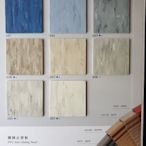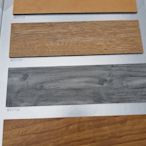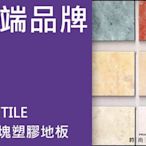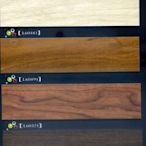搜尋結果
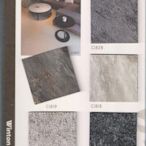 $1300Winton 磚家系列3~方塊塑膠地板每坪1300元起~時尚塑膠地板賴桑聖辰地板設計(原時尚塑膠地板)
$1300Winton 磚家系列3~方塊塑膠地板每坪1300元起~時尚塑膠地板賴桑聖辰地板設計(原時尚塑膠地板) $1200FLOOR TEC 品牌勁耐磨系列~長條耐磨木紋塑膠地板每坪$1200元起~時尚塑膠地板賴桑聖辰地板設計(原時尚塑膠地板)
$1200FLOOR TEC 品牌勁耐磨系列~長條耐磨木紋塑膠地板每坪$1200元起~時尚塑膠地板賴桑聖辰地板設計(原時尚塑膠地板)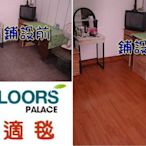 $55《上禾屋》LG舒適毯,塑膠地板,木地板,木紋地墊,保母協會推薦,嬰幼兒爬行,清潔乾淨無菌!!-= 上禾屋塑橡膠批發零售=-
$55《上禾屋》LG舒適毯,塑膠地板,木地板,木紋地墊,保母協會推薦,嬰幼兒爬行,清潔乾淨無菌!!-= 上禾屋塑橡膠批發零售=- $750台中塑膠地板-南亞木紋雅風系列-長條型塑膠地磚~《台中市免運費》上美窗簾壁紙地毯
$750台中塑膠地板-南亞木紋雅風系列-長條型塑膠地磚~《台中市免運費》上美窗簾壁紙地毯![布匠- 高雄門市 高品質 台灣製 超耐磨地板 塑膠地板 木紋地板 台灣製 有丈量估價服務 布匠- 高雄門市 高品質 台灣製 超耐磨地板 塑膠地板 木紋地板 台灣製 有丈量估價服務]() $640布匠- 高雄門市 高品質 台灣製 超耐磨地板 塑膠地板 木紋地板 台灣製 有丈量估價服務布匠窗簾
$640布匠- 高雄門市 高品質 台灣製 超耐磨地板 塑膠地板 木紋地板 台灣製 有丈量估價服務布匠窗簾![台中塑膠地板-優質.耐用.商品特價.木紋塑膠地磚歐雅2.0mm 台灣製造《台中市免運費》 台中塑膠地板-優質.耐用.商品特價.木紋塑膠地磚歐雅2.0mm 台灣製造《台中市免運費》]() $650台中塑膠地板-優質.耐用.商品特價.木紋塑膠地磚歐雅2.0mm 台灣製造《台中市免運費》上美窗簾壁紙地毯
$650台中塑膠地板-優質.耐用.商品特價.木紋塑膠地磚歐雅2.0mm 台灣製造《台中市免運費》上美窗簾壁紙地毯![美的磚家~知名品牌 讚!南亞華麗地磚30cmx30cmx2m/m.南亞透心塑膠地磚.塑膠地板~700元/坪 超耐磨!. 美的磚家~知名品牌 讚!南亞華麗地磚30cmx30cmx2m/m.南亞透心塑膠地磚.塑膠地板~700元/坪 超耐磨!.]() $700美的磚家~知名品牌 讚!南亞華麗地磚30cmx30cmx2m/m.南亞透心塑膠地磚.塑膠地板~700元/坪 超耐磨!.[美的磚家]塑膠地磚的專家
$700美的磚家~知名品牌 讚!南亞華麗地磚30cmx30cmx2m/m.南亞透心塑膠地磚.塑膠地板~700元/坪 超耐磨!.[美的磚家]塑膠地磚的專家![RADY FLOOR品牌~超耐磨導角小木紋塑膠地板每坪2400元起**時尚塑膠地板賴桑** RADY FLOOR品牌~超耐磨導角小木紋塑膠地板每坪2400元起**時尚塑膠地板賴桑**]() $2400RADY FLOOR品牌~超耐磨導角小木紋塑膠地板每坪2400元起**時尚塑膠地板賴桑**聖辰地板設計(原時尚塑膠地板)
$2400RADY FLOOR品牌~超耐磨導角小木紋塑膠地板每坪2400元起**時尚塑膠地板賴桑**聖辰地板設計(原時尚塑膠地板)![台中塑膠地磚-工業風奈米系列 時尚.新潮. 塑膠地磚塑膠地板 (新品發售)每坪1400元 台中塑膠地磚-工業風奈米系列 時尚.新潮. 塑膠地磚塑膠地板 (新品發售)每坪1400元]() $1400台中塑膠地磚-工業風奈米系列 時尚.新潮. 塑膠地磚塑膠地板 (新品發售)每坪1400元上美窗簾壁紙地毯
$1400台中塑膠地磚-工業風奈米系列 時尚.新潮. 塑膠地磚塑膠地板 (新品發售)每坪1400元上美窗簾壁紙地毯![**時尚塑膠地板賴桑** TOP TILE 2 大方塊塑膠地板連工帶料~每坪只要500元起 **時尚塑膠地板賴桑** TOP TILE 2 大方塊塑膠地板連工帶料~每坪只要500元起]() $500**時尚塑膠地板賴桑** TOP TILE 2 大方塊塑膠地板連工帶料~每坪只要500元起聖辰地板設計(原時尚塑膠地板)
$500**時尚塑膠地板賴桑** TOP TILE 2 大方塊塑膠地板連工帶料~每坪只要500元起聖辰地板設計(原時尚塑膠地板)![(居家雅築) L60321 防燄超厚耐磨長條木紋塑膠地板地磚(帝寶系列IV 100%台灣製造) L60511 (居家雅築) L60321 防燄超厚耐磨長條木紋塑膠地板地磚(帝寶系列IV 100%台灣製造) L60511]() $570(居家雅築) L60321 防燄超厚耐磨長條木紋塑膠地板地磚(帝寶系列IV 100%台灣製造) L60511居家雅築
$570(居家雅築) L60321 防燄超厚耐磨長條木紋塑膠地板地磚(帝寶系列IV 100%台灣製造) L60511居家雅築![台中塑膠地板- 枕木系列~長條木紋塑膠地磚每坪650元起《台中市免運費》 台中塑膠地板- 枕木系列~長條木紋塑膠地磚每坪650元起《台中市免運費》]() $1台中塑膠地板- 枕木系列~長條木紋塑膠地磚每坪650元起《台中市免運費》上美窗簾壁紙地毯
$1台中塑膠地板- 枕木系列~長條木紋塑膠地磚每坪650元起《台中市免運費》上美窗簾壁紙地毯
Dielectric Breakdown Voltage. 40 MV/m. Polyvinyl chloride (alternatively: poly (vinyl chloride), [6] [7] colloquial: vinyl [8] or polyvinyl; abbreviated: PVC [8]) is the world's third-most widely produced synthetic polymer of plastic (after polyethylene and polypropylene ). About 40 million tons of PVC are produced each year.
- (C₂H₃Cl)ₙ
- insoluble
- 1.4 g/cm³
- insoluble
Polyethylene terephthalate (or poly (ethylene terephthalate), PET, PETE, or the obsolete PETP or PET-P ), is the most common thermoplastic polymer resin of the polyester family and is used in fibres for clothing, containers for liquids and foods, and thermoforming for manufacturing, and in combination with glass fibre for engineering resins. [5]
- (C₁₀H₈O₄)ₙ
- 10–50 kg/mol, varies
- > 250 °C (482 °F; 523 K) 260 °C
- Practically insoluble
High-density polyethylene ( HDPE) or polyethylene high-density ( PEHD) is a thermoplastic polymer produced from the monomer ethylene. It is sometimes called "alkathene" or "polythene" when used for HDPE pipes. [1] With a high strength-to-density ratio, HDPE is used in the production of plastic bottles, corrosion-resistant piping, geomembranes ...
Polypropylene ( PP ), also known as polypropene, is a thermoplastic polymer used in a wide variety of applications. It is produced via chain-growth polymerization from the monomer propylene . Polypropylene belongs to the group of polyolefins and is partially crystalline and non-polar.
Formosa Plastics Corporation ( Chinese: 台灣塑膠公司; lit. 'Taiwan Plastics Company') is a Taiwanese plastics company based in Taiwan (formerly called "Formosa") that primarily produces polyvinyl chloride (PVC) resins and other intermediate plastic products. It is the corporation around which influential businessman Wang Yung-ching formed ...


